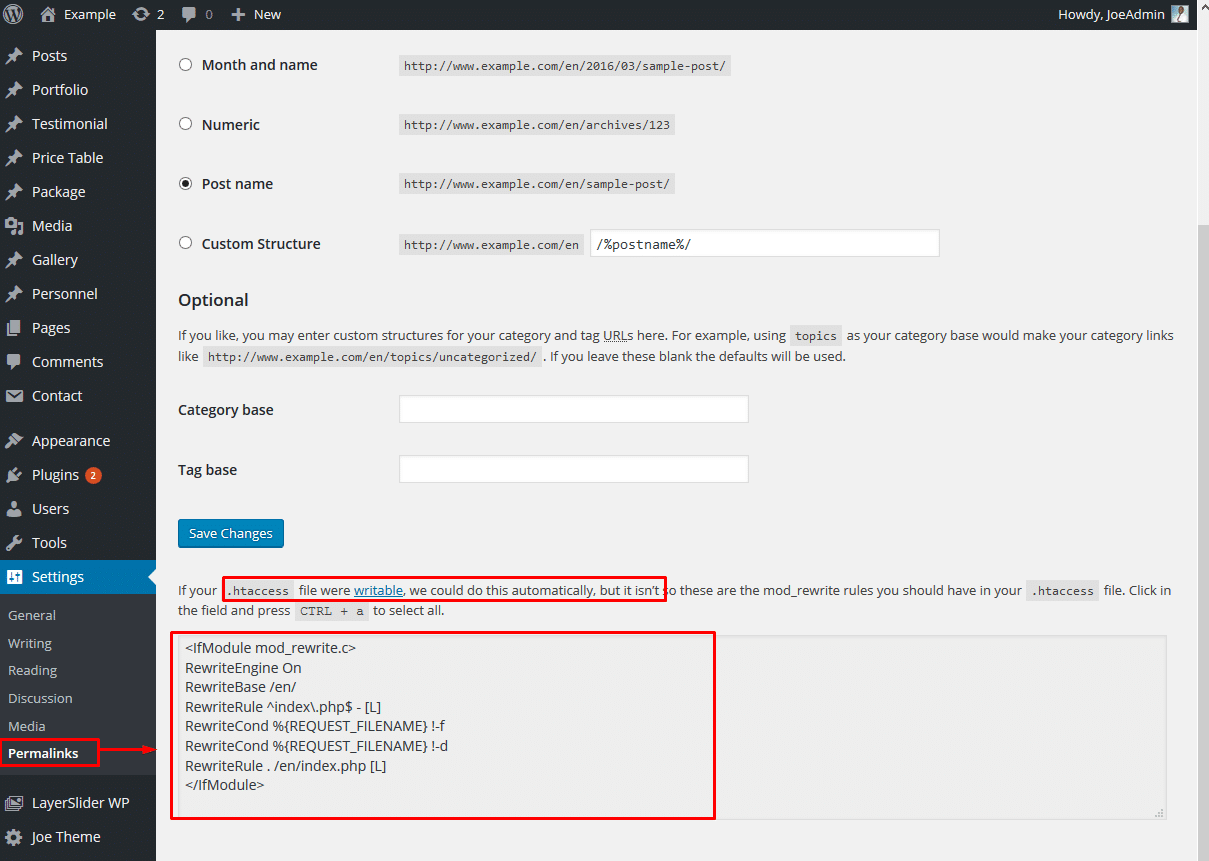

Thus, you won’t find an option to edit a. Moreover, security is pivotal for the reasons we mentioned. htaccess editor WordPress pluginĪlthough WordPress has a built-in editor for a variety of HTML, CSS, and PHP files. Check the exact steps for your FTP client. Making it appear in FileZilla is as easy as clicking on Server in the main menu, then selecting Force showing hidden files from the drop-down list. htaccess file is missing, it’s likely hidden, like in method 1. htaccess file inside and right-click on it to select Edit or View/Edit, which varies from client to client.

If it doesn’t contain FTP account information: Check the e-mail you got from your hosting when signing up.They may have a different user interface and specific features, but the basics remain the same.
Wordpress htaccess install#
htaccess file through FTP clientĭon’t like accessing your website through a web page, or planning to make extensive changes that require frequent sign-ins or large uploads? Don’t fret, there’s an alternative, though it requires you to select and install one of many leading FTP clients. You may have to reopen the “File Manager” window to see the. Put a checkmark in front of Show Hidden Files (dotfiles).Select Document Root and the domain name of your website. Click on Settings in the top right corner of the “File Manager” window.For instance, in the default cPanel, you need to: Steps to make them show is specific to the Control Panel they use. htaccess to prevent inexperienced owners from tampering. Save changes when you’re done.Īs we mentioned, some web hosting providers purposefully conceal. The file will open in a text editor, letting you add snippets and other modifications.htaccess and select View/Edit or only Edit. php and ext to folders such as “wp-content” and “wp-includes”. It will be among file extensions such as. It may be named root or htdocs or be inside those directories. This can vary based on alterations to cPanel. On the main menu, head over to the File Manager option, typically under “Files” or “Popular Links”.Sign in to the cPanel on your web hosting website.With login details in hand, do the following:
Wordpress htaccess password#
You’ll get the login credentials via e-mail, though you’re usually required to change the auto-generated password manually. cPanel, short for Control Panel, is something your web hosting installs for you and makes accessible on their website. You also don’t need help from third parties, i.e., custom changes, software, or WordPress plugins. htaccess file via cPanelĪs usual, we start with the method that requires the least effort and advanced knowledge. There’s no need to risk losing changes made so far. htaccess file, you should create a backup of your website. No matter how small the change you plan is, and despite the fact you can always replace the contents with a default WordPress.
Wordpress htaccess how to#
Since we presume you do, here’s how to access the. It’s so significant that many hosting providers keep it hidden to prevent newcomers from messing with it unless they know what they’re doing. Or, are you, perhaps, rewriting URLs or altering the structure of s? Setting up permanent (301) redirects or trying to force SSL (Secure Sockets Layer) to transition from HTTP to HTTPS? Whatever the case may be, the file is undoubtedly important. htaccess file on your WordPress website? We assume you want to block a specific IP address from accessing your website or some sections.


 0 kommentar(er)
0 kommentar(er)
